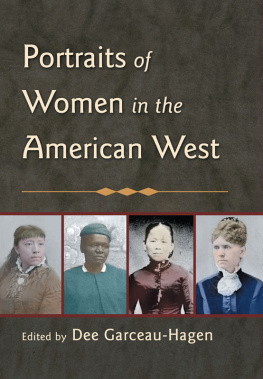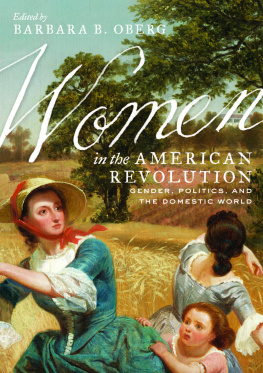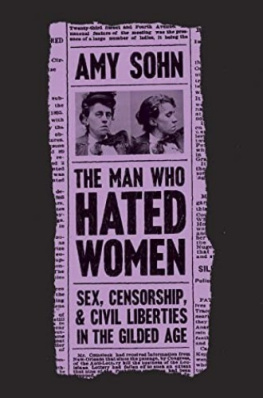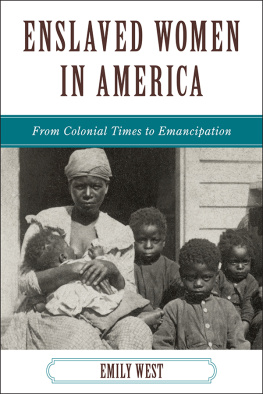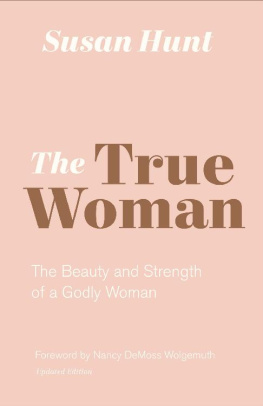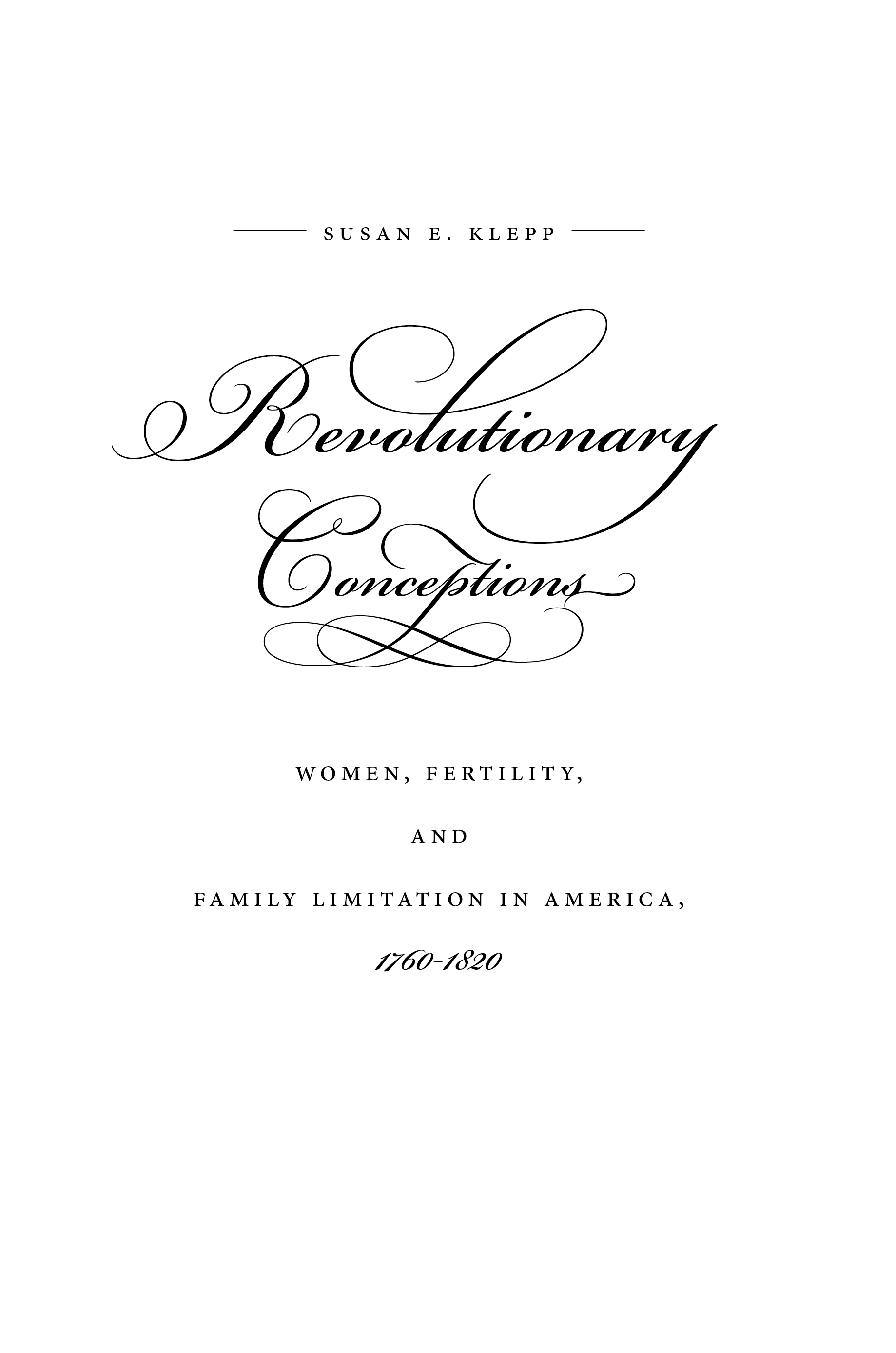This project has been gestating for a long timetoo long. This is not because of a lack of helpful historian / midwives. Indeed, I have been exceptionally lucky in the assistance provided by friends and colleagues in finally birthing this book. Kathleen Brown and Toby Ditz read the entire manuscript as the outside readers for the Omohundro Institute of Early American History and Cultures Book Publications program. Their strong support and astute comments have been much appreciated and have helped make this a better book. The encouragement of Linda K. Kerber has likewise been important in pushing this project forward. Barbara Day-Hickman, Karin Wulf, Gloria L. Main, and Judith McGaw read and commented on various chapter drafts. A whole host of colleagues have listened to paper presentations (sometimes more than once), and their probing questions and careful comments have been extremely useful: Ava Baron, Leslie Patrick, Susan Branson, Billy G. Smith, Ann A. Verplanck, Simon Newman, Farley Grubb, Cornelia Dayton, Elaine F. Crane, David Waldstreicher, Roderick McDonald, and C. Dallett Hemphill are among many in the historical community who helped sharpen the argument. Others went out of their way to send citations, references, and documents: Konstantine Dierks, Ellen G. Miles, Ruth Wallis Hearndon, Dorothy Truman, Niki Eustace, Frank Fox, Gary Nash, Owen S. Ireland, and Susan Stabile are among those generous scholars. Emily Rush undertook some of the most tedious clerical tasks and provided her computer wizardry to many a frustrating problem. Fredrika Teute and Mendy Gladden were early supporters. The careful editing of Bridget Reddick and Virginia Montijo has sometimes succeeded in reining in my irregular prose. A study leave from Temple University provided valuable research time. The McNeil Center for Early American Studies has been an intellectual home for a long time; the Omohundro Institute for Early American History and Culture provided additional stimulus as have the staffs of the many archives in and around Philadelphia. A long time ago now Dorothy Swaine Thomas, Ann R. Miller, and Hope T. Eldridgedemographers allprovided inspiring examples of women as scholars, when there were none in any history department of my acquaintance.
My family has helped me through both by supporting my work and by taking me from it. To Phil, Ben, Karen, Emily, and new grandbaby Jackson this book is dedicated.
INTRODUCTION
First to Fall
FERTILITY, AMERICAN WOMEN, AND REVOLUTION
A nineteenth-century historian entertained his readers with a comic interlude. His tale of bygone days told of the reunion of Old Lydick, a humble Pennsylvania German veteran of the Revolutionary War, with George Washington, who had once honoured [Lydick] with his favour. After mutual pleasantries, Lydick supposedly told the newly elected first president of the United States:
It has been my happiness, once again, to meet and pay my duty to your Excellency. I have but one regret. You are childless! You leave your country no representative of your virtues! But you are not as old as Abraham [George Washington was in fact fifty-seven]; and she (gently touching the shoulder of Mrs. Washington) as old as Sarah [Martha Dandridge Custis Washington was fifty-eight]; and through the favour of the Almighty, I hope that a son may still be born to bless us.
Washington thanked him, and Lydick left, praying, that fruitfulness might crown the last years of their existence with perfect felicity. It was not enough for Washington to be the figurative father of his country. According to this elderly baker and farmer, the president also needed to prove his virility by siring male offspring. Procreation towered above all other achievements.
This story is undoubtedly fictitious, with its stock comic character of the simple, honest, but rustic and faintly ludicrous Pennsylvania Dutchman. Yet Lydicks character was meant to recall the old days, when fruitfulness was a civic virtue, not laughably uncouth, and when a mans standing as husband and father was measured by the number and rank of his sons as well as by the deference of his subordinates. It was a time, too, when a womans first task in marriage was to follow biblical commandments to increase and multiply (as well as to be silent). By 1822, when this tale was published, Lydicks fecund and patriarchal sentiments, once so potent, were designed to evoke a wistful smile or hearty chuckle at old days, old ways. What had changed?
In the actual, not fictive, late 1780s, Susanna Hopkins Mason took pen in hand to describe a very different ideal through the lens of her life on a Pennsylvania farm:
Here frugal plenty on our board is seen,
A house convenient, mostly, neat and clean;
A few choice books, a few choice friends I boast,
Which seem to vie which shall engage me most,
Four darling objects of parental care,
Blooming in youth, of either sex a pair,
My Egbert too, if I his worth might tell,
In modest merit, few would him excel.
Masons doggerel verse described a new mental and material world: a reasonably efficient and inviting domestic space, with books and with, no doubt, the teacups, teapots, teaspoons, sugar tongs, and tea tables that invited socializing with friends. The intellectual diversions of reading and sociability offered enticing options and shifted womens concerns, if not always their waking hours, from the daily drudgery of housework. Egalitarian ideals infused relationships: a loving husband and responsive father shared the joys of rearing carefully enumerated, beloved children, equally divided between girls and boys. And in an age when most women, if they lived through their childbearing years, might still bear seven, eight, or nine children, Mason counted four offspring. All thrive because frugal restraint allowed plenty for everyone. Even though a son and daughter would unfortunately die during a later epidemic, Susanna Mason was done with childbearing. She was not alone.


